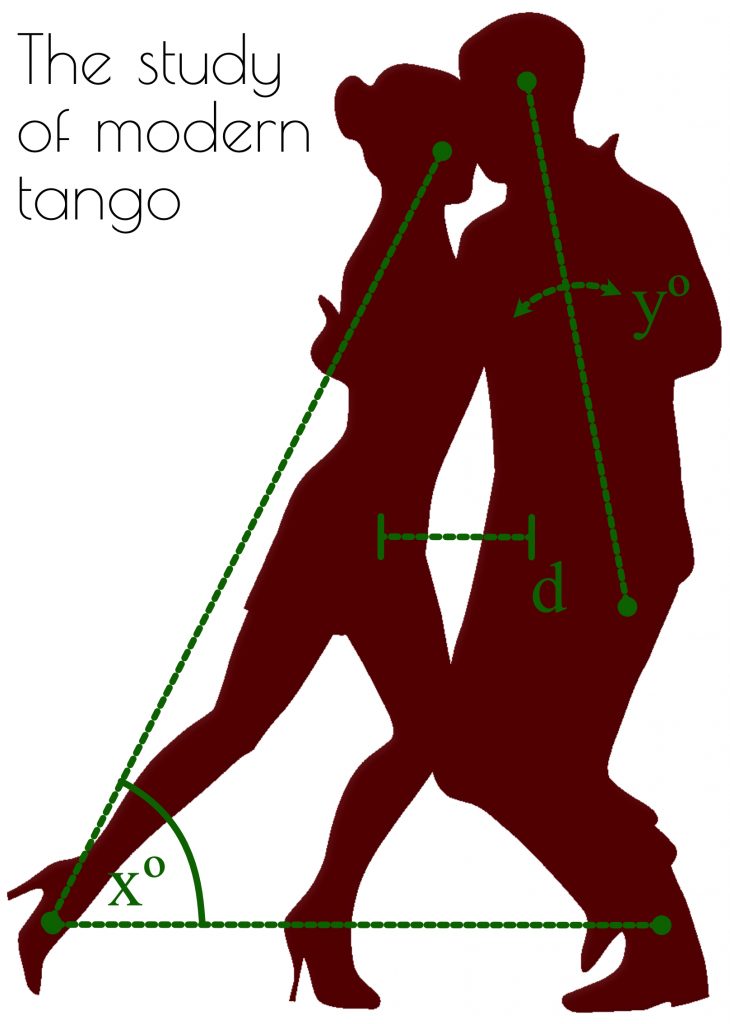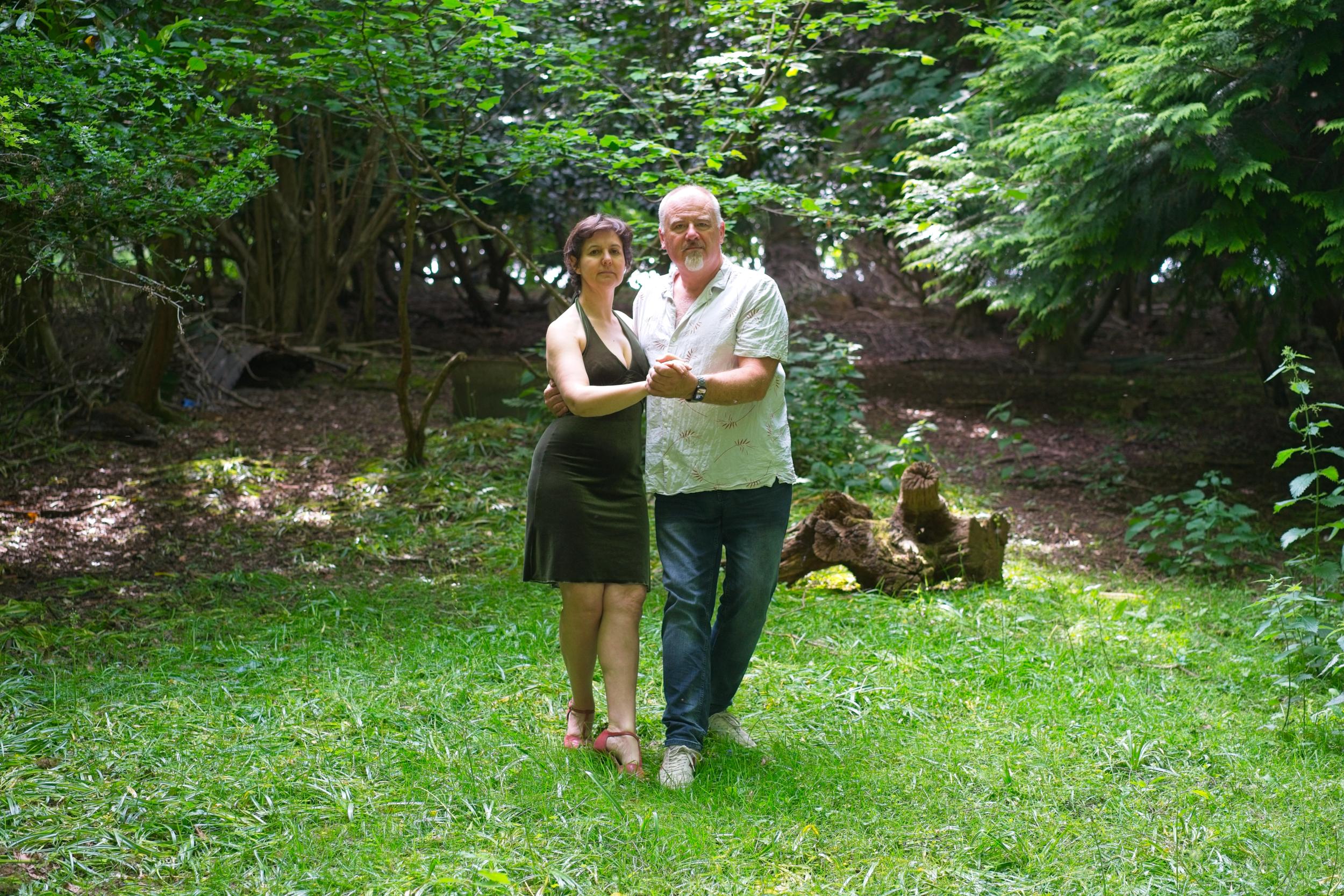I am a scientist and an engineer. From as far back as I can remember I have had a love of finding out how things worked, and would play around with bits of equipment and take them apart just to see what went on inside them. My father was a metrologist – an expert in the field of precision electrical measurement – so I was introduced to scientific principles at a very early age. I even went to a school that was named after Charles Darwin, the nineteenth-century scientist who formulated the theory of evolution, and every day on my way into the school I walked under a sign that was over the main entrance displaying the school motto – “Know the Reason”. When I do something I like to understand it, to see how it works, and to learn how it interacts with everything around it.

Neotango : n. The modern evolution of tango
-logy : n. The science or study of a particular subject.
Not long after I started dancing tango I began to realise that this is not just a dance that you learn by rote. Some teachers may present it in the form of “steps” that you are supposed to memorise, but that is just a way to communicate the concepts of the dance in bite-sized chunks. Tango is really an improvised dance, a dance of connection, a dance where no two dances will ever be exactly the same, even with the same music, the same partner, and the same venue. Tango is not the same as other dance styles and in those early days I did not understand why.
As I started to progress I began to realise that tango has a strong set of rules and defined techniques that – if understood by both the leader and the follower – mean that no steps ever need to be learned. The leader leads, the follower follows (well not exactly, but more about that later), and the dance emerges from the connection.
The moment I realised all this was when I knew that in order to be able to dance this dance and to get better at doing it, I needed to understand these rules. I needed to understand the physics, the kinesiology of tango. And although I did not realise it at the time, that was the start of what I now call Neotangology.
History
Tango is a dance with a rich and intricate history, and any attempt to understand it must begin there. But as is often the case with social and cultural movements that have evolved over long periods of time there is very little definitive history to draw upon. Tango did not emerge fully formed with an official historian and a set of notes explaining how someone came up with it, but was the gradual morphing of different styles and cultures starting in the mid-19th century and continuing to this day.
Over time the dance became so intertwined with the culture and society of Argentina that the two became almost inseparable. It absorbed parts of the social rules in place there, and influenced the way that Buenos Aires, Montevideo, and the surrounding areas developed. Tango was not just a dance, it was a social movement, and anyone who looks at the history of tango needs to start by recognising that.
In Neotangology my aim is not to subvert anything or to dismiss the history as being irrelevant. Tango would not be the dance it is today without that history, and as you will see later it is unlikely that I would ever have encountered tango had it not had that rich background to draw upon.
But like everything it continues to evolve, and if tango is to survive that evolution must be recognised and embraced. Any attempt to restrict change and keep tango frozen in a point in time will eventually force its relegation into little more than a historical curiosity.
The purpose behind Neotangology is to find a path for tango to grow and stay relevant, whilst not losing touch with its roots. But I know already that this might prove challenging as much of what I will say in this book is likely to be controversial.
The Great Divide
My early experiences with tango were largely what I would have expected from a dance class. I had been dancing Le Roc (also known as Ceroc or Modern Jive) for a while and so tango was not my first dance class experience. There were differences to Le Roc obviously, not the least being that the classes were generally smaller, but you turned up, listened to some music, and learned some steps.
But what I did not realise at the time was that at least one part of this was controversial. Not the steps – they were pretty much standard everywhere; not the way of teaching – that was certainly no more unusual than other places I attended later on; but the music. The music was so controversial because the classes I went to used music that was not traditional tango music.
This was when I found out that the tango world is divided, with one group of tango dancers barely acknowledging that the other even exists. Because tango has its traditionalists, and to many of them the traditional way is the only way and at a minimum the traditional way requires that you can only listen to tango music – specific tango music – when dancing tango.
For me, tango is a dance. It is a beautiful, expressive, varied, and versatile dance that in my opinion no other dance style comes close to imitating, but it is still just a dance. For many people, however, tango is much more than that, and in order to dance it ‘correctly’ one must incorporate early 20th century Argentine culture and only dance to music written specifically for tango, and performed by the bands of the time between 1935 and 1955.
The two “sides” of the discussion rarely come together. Many tango traditionalists I have met have a very low opinion of those of us that prefer the more modern approach. At various times I have been told that ‘you will eventually grow up’ to prefer the traditions, and that ‘if you don’t like traditional music you just have to listen to more of it.’ I have heard world-class modern tango performers introduced at a respectable tango festival with ‘I am not sure what this is. Is it tango?’ and I have seen teachers who prefer a modern style vilified for ‘damaging tango’ in some unspecified way.
As I developed my skills as a tango dancer I also made a point of learning about the history and origins of the dance. For a while I wondered if I would eventually come to the same opinion and would find myself drifting towards a “traditional” style of dance as so many had done before me, but it soon became obvious that my journey was taking a different route. The more I looked into how tango has evolved into what it is today the more I saw it as something open and evolutionary that has always embraced change and newness. I also began to realise that I was not alone. Others had seen the versatility and expressiveness of tango and refused to let it get bogged down in history for no reason. There was a tango nuevo movement (a Spanish phrase that simply means “new tango”) of people who sought to continue the evolutionary process of the dance, and others were using the term neotango (the ‘neo’ prefix is Greek for ‘new’) to describe a more modern teaching style and an openness to new ways of thinking.
As you will see as I continue to publish on this website, back then my understanding of the terms tango nuevo and neotango was flawed, and it took me a few years to really understand what they meant and how they were being used. But my study and investigations into modern tango – the process I call Neotangology – eventually led me to a deeper understanding of the dance, and gave me a passion for keeping it fresh and modern whilst not losing touch with its origins.
Some tango dancers will find what I have to say a little controversial; some will wonder how anyone could be offended by a different way of looking at tango. I see what I am doing as the best way to honour and respect the traditions, history, and culture of tango, but in a way that keeps it relevant for the next hundred years.
So join me on my journey as I look into Neotangology – the science and study of modern tango.


No responses yet